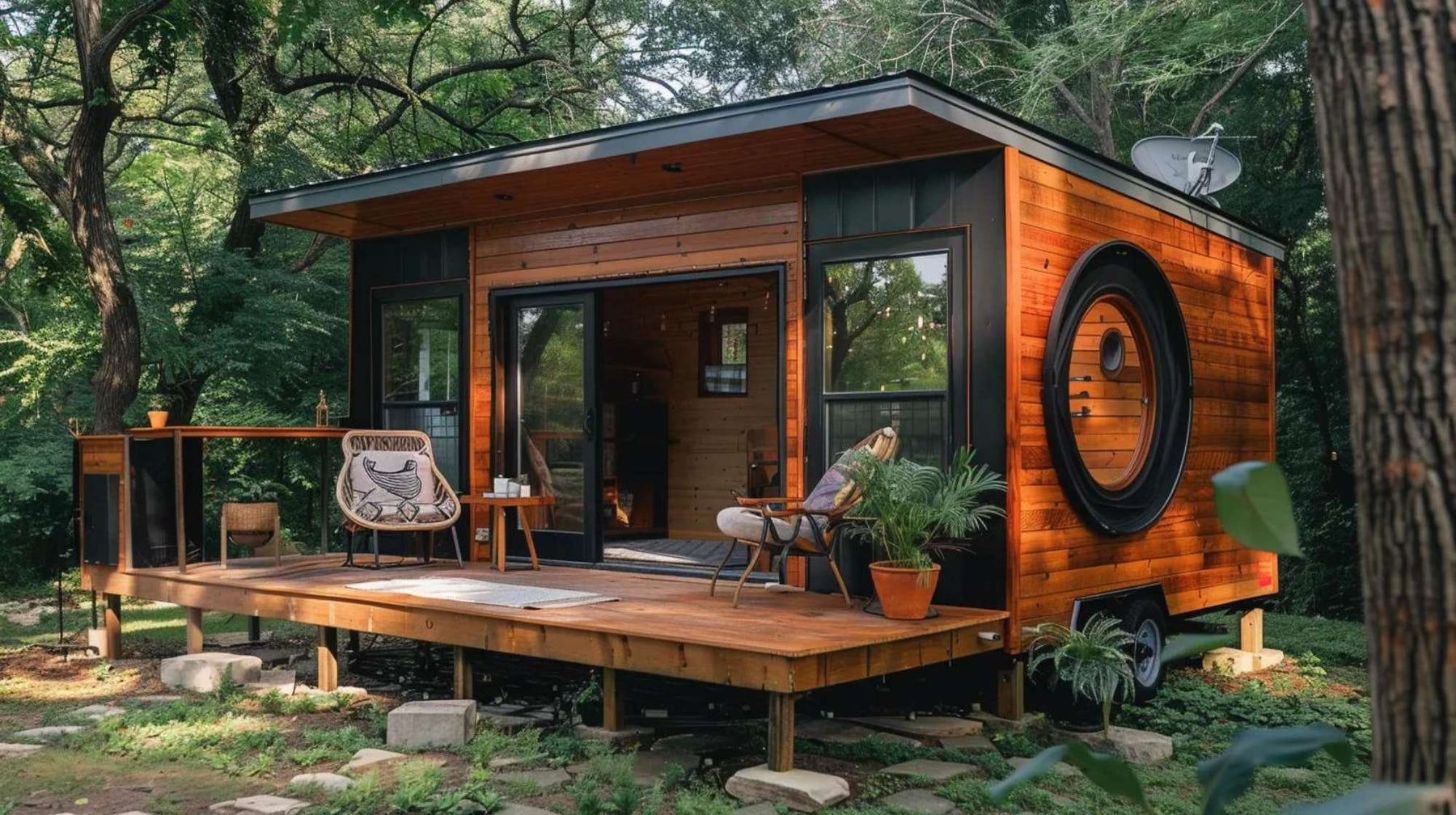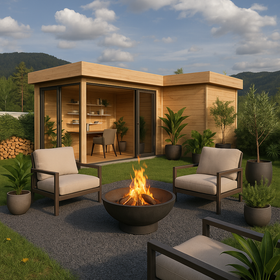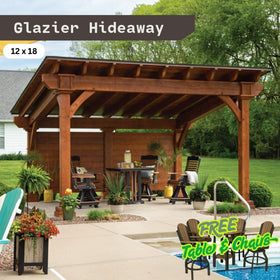512-777-0154

Can I Build a She Shed on My Property?
So, you’ve been daydreaming about a cozy backyard retreat where you can sip coffee, paint, read, or just escape the chaos inside the house. The short answer to “Can I build a she shed on my property?” is yes, you usually can.
But there are a few rules to check before your dream hideaway becomes a reality.
Let’s go step by step and make sure your backyard project turns into a space you’ll actually love (and can legally keep).
The Short Answer: Yes, But You Need to Check Local Regulations
Yes, you can build a she shed on your property. But you need to follow your city or county’s building rules.
These rules can affect the shed’s size, location, and purpose. Some areas are more flexible, while others treat backyard sheds like mini houses.
So before you grab a hammer, check local regulations. It’s easier than explaining to an inspector why your “creative space” suddenly has fairy lights and a sofa.
Crucial Legal Steps Before You Start Building
Before you turn Pinterest dreams into blueprints, handle the legal details. This part may not be fun, but it’s what keeps your she shed project safe and worry-free.
Getting the paperwork right means no fines, no angry neighbors, and no awkward calls from the zoning office.
1. Navigating Local Zoning and Building Codes
Zoning laws decide what kind of structures you can build on your land. Building codes ensure that those structures are safe.
Some towns allow small backyard studios with no problem. Others limit how you can use them: no guest houses, no overnight stays.
Always contact your local zoning department to confirm what’s allowed. A five-minute call now saves you from a costly teardown later.
2. The Importance of a Building Permit and When You Might Not Need One
Permits sound intimidating, but they exist to keep everything up to code. You’ll probably need one if your shed is large, has electrical work, or includes plumbing.
Small sheds, think garden storage or under 100 square feet, sometimes don’t require a permit. Still, every city sets its own size limits. It’s worth asking before construction starts. A simple permit today beats paying a fine tomorrow.
3. Understanding Setback Requirements and Property Lines
Setback rules tell you how far your she shed must sit from fences, roads, and neighboring homes. Think of them as invisible lines protecting everyone’s space.
Your local office can give you exact measurements. Even if your neighbor is friendly now, it’s best to stay compliant in case that friendship fades over property lines.
4. Do You Need HOA Approval? (Homeowners Association Rules)
If your neighborhood has a Homeowners Association, they probably have a say in your shed’s design.
Some HOAs want matching colors or limit the shed’s size. Others care about roofing materials or where it’s placed. Before you start building, check with your HOA. It’s better than getting a letter later saying, “Please remove your she shed immediately.”
5. Size and Height Restrictions to Be Aware Of
Every city sets limits on how tall or wide your shed can be. These rules protect visibility, sunlight, and neighborhood aesthetics.
For example, one area might cap height at 12 feet, while another allows 15. Don’t assume, verify. Staying within size limits helps your shed blend in beautifully rather than standing out like a tiny skyscraper.
Planning Your She Shed: Defining Purpose and Location
Now comes the creative part.
What’s your she shed for? A place to paint, work, garden, or just breathe?
Your answer shapes every design decision from here on out.
1. Popular She Shed Uses and Themes
A she shed can become anything you want: a mini yoga studio, an art nook, or even a reading retreat. Some people transform theirs into home offices or cozy guest spaces.
Others use them for gardening, sewing, or music. There’s no wrong answer. Your shed should reflect your hobbies and the vibe that makes you happiest.
2. Choosing the Right Spot on Your Property
Location matters. Pick a level, well-drained area that’s easy to reach but still private.
Think about sunlight, too. If you plan to paint or read, natural light makes a big difference. And if you’re putting in electricity or plumbing, keeping it close to the main house helps lower costs.
3. To Build or To Buy? (DIY, Shed Kits, or Custom-Built)
There are three main ways to get your she shed:
- DIY builds if you love a challenge and want full control.
- Prefabricated kits for quick assembly and fewer headaches.
- Custom builds when you want something one-of-a-kind and don’t mind paying extra.
If you already have an old garden shed, you could also give it a makeover. A little sanding and paint can turn storage into sanctuary.
Construction Essentials: Foundation, Structure, and Utilities
A strong foundation and smart setup mean your shed lasts for years and stays comfortable all year long.
1. Laying a Sturdy Foundation (Concrete Slab vs. Pavers vs. Skids)
The foundation is your she shed’s backbone. It keeps things level, stable, and dry.
Concrete slabs are the most solid option. Pavers cost less and work well for smaller sheds. Wooden skids make your structure portable.
Choose based on soil conditions, shed size, and your budget.
2. Ensuring Year-Round Comfort: Insulation and Ventilation
If you’ll spend lots of time inside, insulation is your best friend. It keeps heat in during winter and out in summer.
Proper ventilation prevents damp air and musty smells. Add vents or a small fan, and your shed will feel fresh even on humid days. A portable heater or AC unit can take it from seasonal to year-round comfort.
3. Wiring for Power: Running Electricity to Your She Shed
Electricity opens the door to lighting, outlets, and maybe even a coffee maker. For safety, hire a licensed electrician.
You can run underground cables from your home or use solar power for simple setups. Don’t forget Wi-Fi, perfect for streaming music or joining a Zoom call from your backyard hideout.
4. Plumbing Considerations (Can You Put a Bathroom in a She Shed?)
Yes, you can add plumbing. But it’s a big project. Running water means trenching pipes, adding drainage, and following strict codes.
For most people, a nearby garden hose or small sink is enough. If you truly want a mini bathroom, talk to a plumber before construction begins.
Related: Can A She Shed Have A Bathroom?
Finishing Touches: Designing Your Backyard Oasis
Now comes the fun part: turning your shed into something beautiful and personal. The right indoor furniture, decor, and touches make all the difference.
1. Maximizing Small Spaces (Functional Furniture and Vertical Storage)
Space is limited, so make every inch work. Choose foldable furniture, hidden storage benches, and wall shelves.
Vertical storage keeps your floor open and your shed feeling airy. Hooks, baskets, and floating shelves help you stay organized without sacrificing style.
2. Bringing in Natural Light (Windows, Skylights, and Doors)
Light transforms a shed into a sanctuary. Install wide windows, skylights, or even French doors to bring in sunshine.
Natural light makes small spaces feel larger, boosts mood, and gives your shed that welcoming glow.
3. Interior Design Styles and Decor Ideas
Style your shed like it’s your personal haven. Go rustic with reclaimed wood, cozy with cushions and throws, or modern with clean lines.
Use a color palette that lifts your mood: soft blues, warm neutrals, or cheerful pastels. Add plants for a fresh touch and make it a space you’ll never want to leave.
4. Enhancing Curb Appeal with Exterior Landscaping
Your she shed should look as good from the outside as it feels inside. Frame it with flowers, shrubs, or climbing vines.
A small walkway or potted plants by the door add charm. Even a simple string of lights can make it glow at night. Small details bring big backyard magic.
Take the First Step in Creating Your Sanctuary
Building a she shed is about creating space for yourself, somewhere peaceful, creative, and entirely your own.
Start small. Check your local rules, plan your layout, and choose a location that makes you smile. Whether you buy a kit, repurpose an old shed, or build from scratch, you’re not just making a structure. You’re building your sanctuary right in your backyard.
And once it’s done, don’t be surprised if it becomes the most popular spot on your property.








